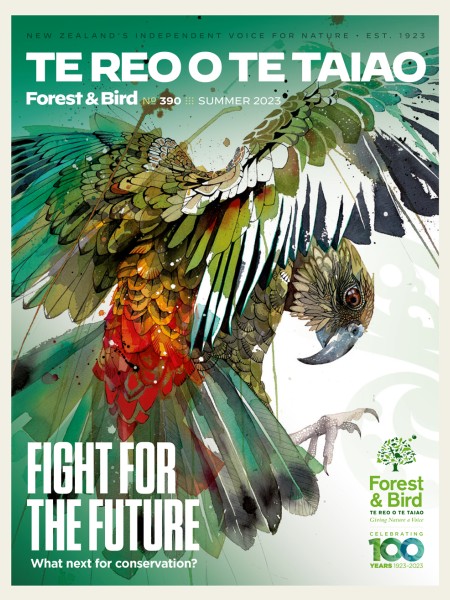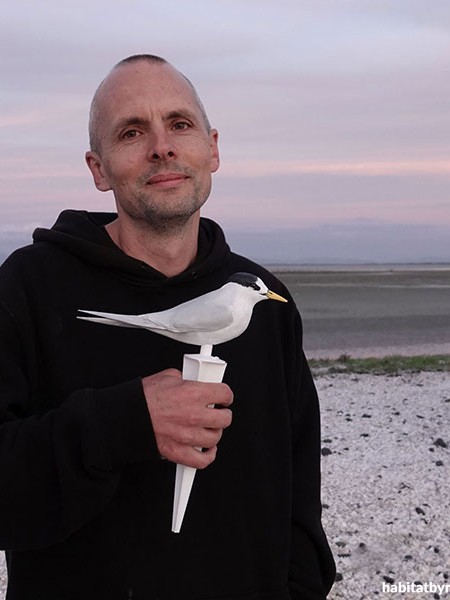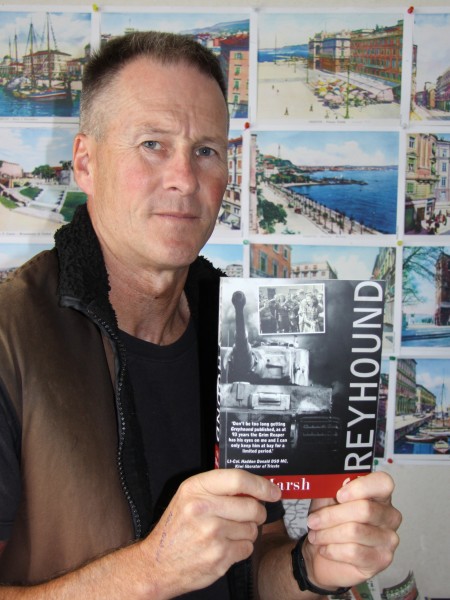Alex Stone looks at the challenges ahead for conservation as we head into 2024 with a new government and an uncertain climate future. Part 2 of 4.
Forest & Bird magazine
A version of this story was first published in the Summer 2023 issue of Forest & Bird magazine.

The late greats Bill Ballantine, Wade Doak, and Roger Grace, and today’s younger voices such as Nick Shears and Shaun Lee have long advocated for the restoration of the health of our marine world. Until recently, their prescient calls mostly went unheeded.
At last December’s UN conference on biodiversity in Montreal, the world’s nations agreed to establish 30% of oceans and land as protected areas and to do this as an urgent priority.
Then the UN ambassador for oceans, Rena Lee, brought down the gavel on the High Seas Treaty, which also aims to place 30% of the seas into protected areas by 2030 to safeguard and recuperate marine biodiversity.
“The ship has docked,” she said in March, echoing relief that 10 years of negotiations had been successfully concluded.
New Zealand signed up to both 30% pledges. In Aotearoa, a third of our land area is already in conservation estate thanks to campaigns by Forest & Bird and others.
But at sea our record is terrible. With less than 1% of New Zealand’s total marine environment fully protected from fishing, we’ve got some catching up to do.
“We need to turn around New Zealand’s dismal record on marine protection and create a network of large and representative marine protected areas, including in our Exclusive Economic Zone,” says former Conservation Minister Eugenie Sage. “That requires new legislation based on Te Tiriti o Waitangi.”

Shaun Lee
Shaun Lee is a conservationist, diver, and photographer with a special interest in community-driven restoration of marine ecosystems, especially in the Hauraki Gulf.
“Conservation has become more decentralised, and the mahi is becoming more dynamic and inclusive,” he said.
“This shift is fostering a broader definition of conservation, accommodating diverse cultural and ecological perspectives. Much of the work is now better labelled as restoration or enhancement.
“The inclusive approach is failing our oceans, with 90% of seabird species threatened with extinction or at risk of becoming threatened and less than one percent of our ocean protected from fishing.”
Shaun is also concerned that lack of funding for core conservation work is putting native species recovery at risk.
He points to the plight of shorebirds, such tara iti fairy tern, New Zealand’s rarest indigenous breeding bird, with about 40 individuals left on Earth.

Sid March.
Sid Marsh is well placed to add to this kōrero. He’s a vastly experienced forest ranger and has worked for DOC in many remote locations, where he’s one of their go-to men for live bird capture and relocation (specialising in kiwi and kōkako).
Sid is also an experienced underwater explorer, having dived in many famous New Zealand locations, from subtropical waters to the sub-Antarctic islands. What are his views on the future of conservation?
“On the terrestrial side, in real practical terms, so much has been achieved conservation-wise across Aotearoa over the last 30 years. However, where the underwater marine environment is concerned over the same period, it’s a different story, progress and restoration has been negligible.
“Social issues and Treaty obligations are today being confused with effective core subaquatic conservation initiatives. No-take marine reserves are the simplest, quickest, most efficient, democratic, and cost-effective measure in fixing the fished-out mediocrity that is the Hauraki Gulf – and all of our inshore waters.”
In future, we will have to find ways to mitigate the effects of climate change across every area of conservation, including in marine ecosystems.
“The oceans have done so much to protect us from the worst effects of climate change and are critical for feeding us and supporting our wellbeing,” points out Eugenie Sage. “We need a serious commitment to transforming commercial and recreational fishing to make them ecologically sustainable, stop over-fishing, and end the bycatch of seabirds, dolphins, seals, turtles, and other protected species.”
Biosecurity is another issue facing our oceans. The Poor Knights Islands are experiencing a spread of kina barrens. It’s a new species of sea urchin doing the damage, one that has appeared from warmers waters and appears to have no natural predators to control it.
The newly arrived tropical species won’t survive if the water temperature drops below 14°C, but this hasn’t happened at the Poor Knights over the past six years.
Divers around Northland and the Hauraki Gulf have also been recording more migrant tropical finfish species. Their effect on the underwater ecosystems is unknown but could require new conservation measures or priorities in the future.
Similarly, the spread of the invasive seaweed caulerpa and many terrestrial weed-foes of native forest recovery could spread thanks to a warming climate. We need to be better armed for the future (in both funding and research) for these biosecurity fights.
Nature-based solutions
Tom Kay is Forest & Bird's Freshwater Advocate.
Passionate freshwater advocates such as Dr Mike Joy and Janet Hunt have long advocated for the urgent conservation of our rivers, lakes, wetlands, and estuaries.
As with ocean conservationists, their calls mostly went unheeded until this year’s cyclones, storms, erosion, floods, and slips drove hundreds of Kiwi families out of their homes, creating a political storm.
Since February, Forest & Bird’s freshwater advocate Tom Kay has been travelling around Aotearoa promoting nature-based solutions, such as making room for rivers, to reduce flooding in local communities.
Making Room for Rivers has been proven in other countries to reduce the risk by modifying or moving traditional flood protection structures, such as stop banks, and allowing rivers more room to roam in their natural flood plains.
“We are finding local residents and councils in high-risk areas are looking for new ideas because the old flood mitigation technologies are no longer fit for purpose in our changing world,” said Tom.
“We need to try new ways of dealing with flooding and erosion risks by working with nature and not against it. The problem is only going to get worse in future, so it’s better for central and local government to invest now rather than wait until it’s too late.”
Forest & Bird is advocating for nature-based solutions to be prioritised by the new government.
In our Every Wetland Counts campaign, we have been raising awareness about the importance of restoring drained wetlands and preventing existing ones from being bulldozed or drained for pasture.
Our Future Forests campaign, led by Dean Baigent-Mercer, focuses on the benefits of removing browsing mammals from forests as a climate action. This leads to healthy carbon sinks that can help prevent flooding and reduce erosion and sediment run-off into oceans.

